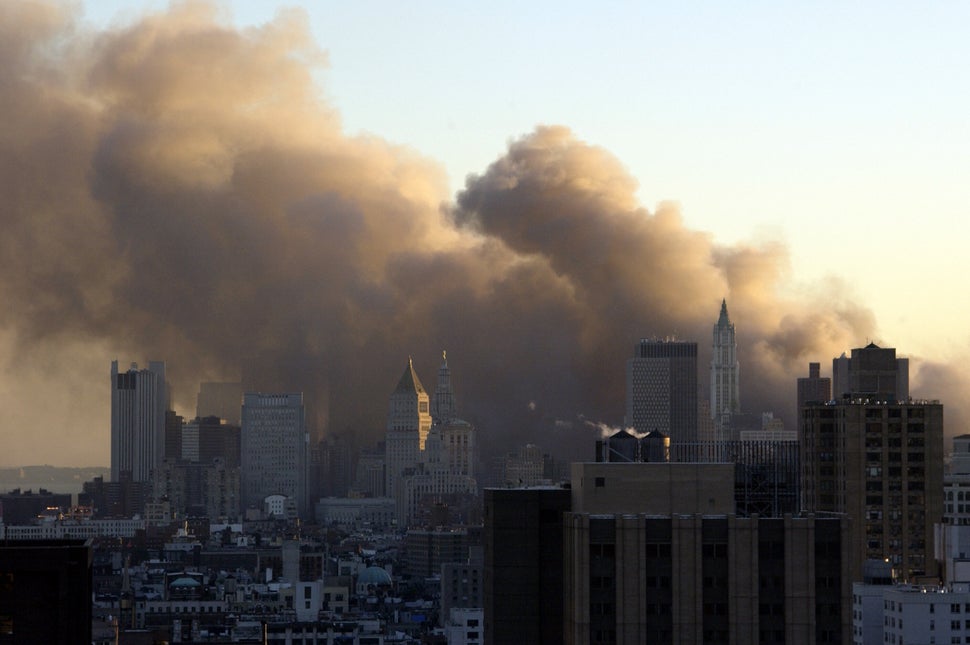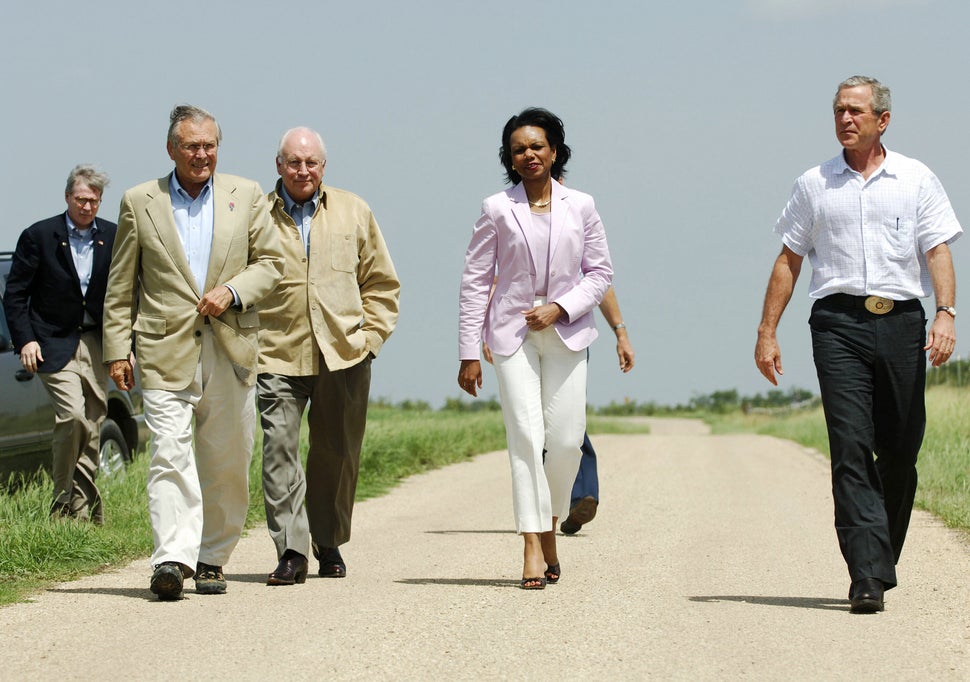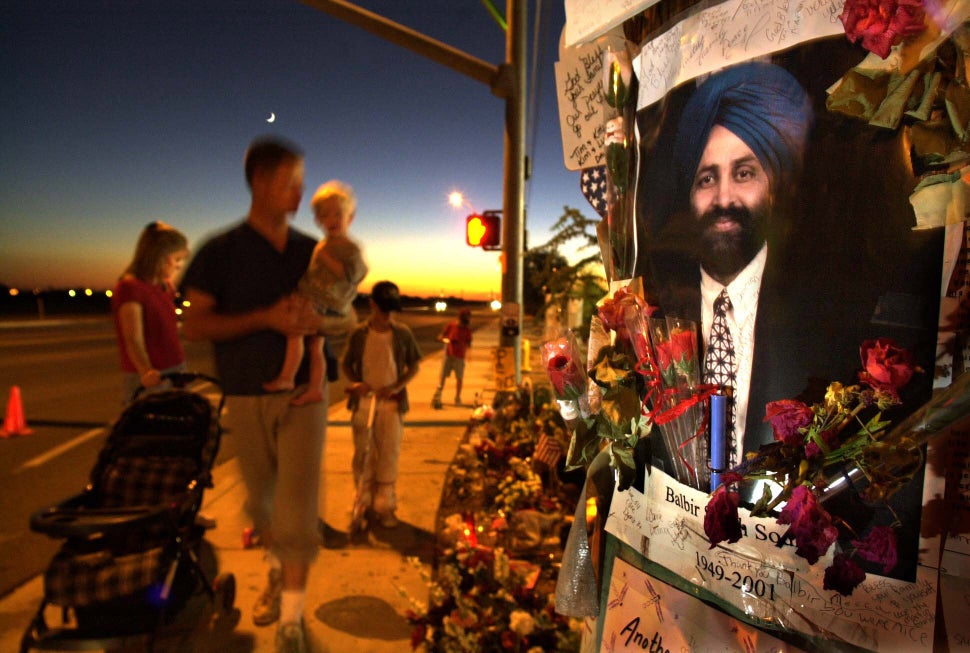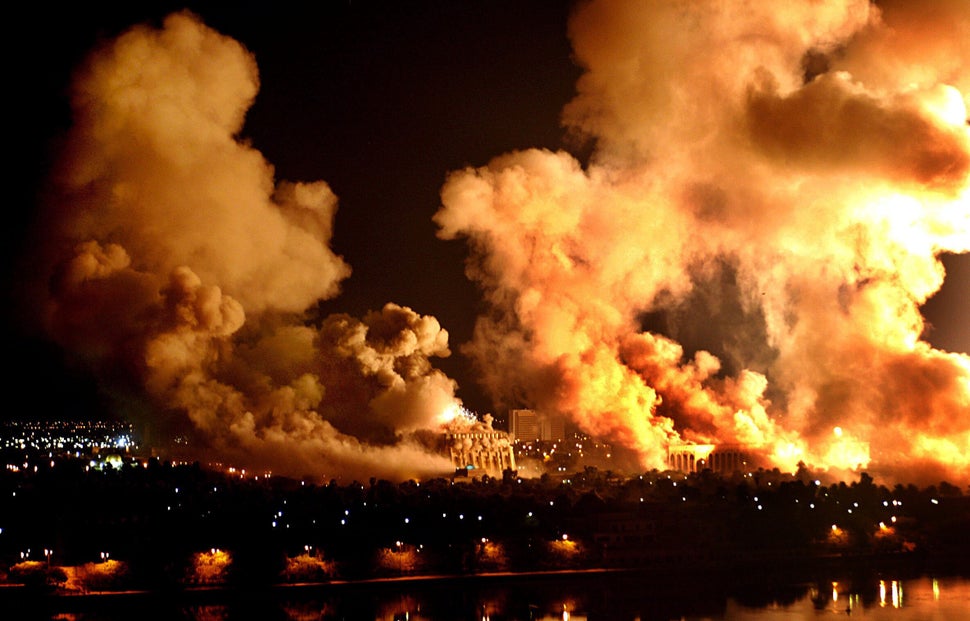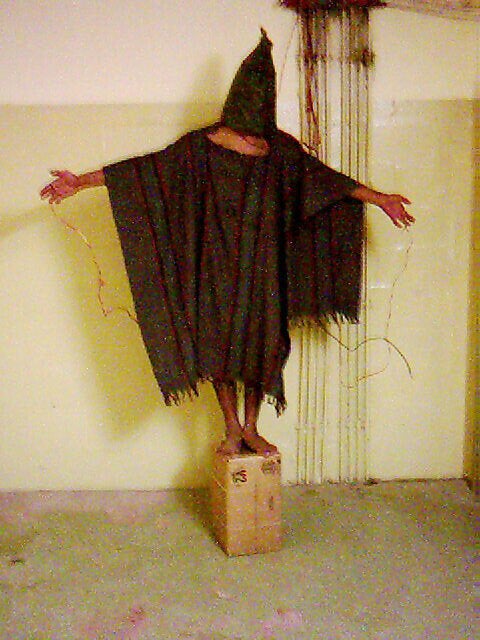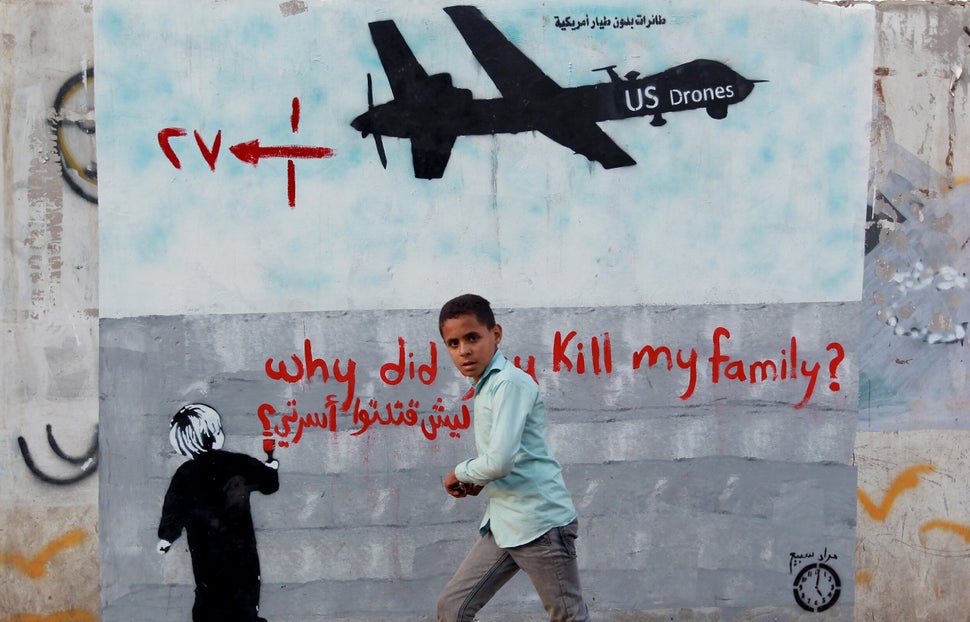Twenty years ago today, I woke up in my basement apartment in Manhattan’s East Village to the sobs of my roommate down the hall. When I went to check on her, she sat on her bed holding a cordless phone to her ear while facing her 10-inch box television set. She pointed to the screen. I looked and saw what we would all come to learn was United Flight 175 crash into the South Tower of the World Trade Center.
She was on the phone trying to reach her family. Her father had been in Boston for a business trip and was scheduled to fly out of Logan International Airport, where the hijacked jetliners originated. She didn’t know what day or which flight. He wasn’t on either of those hijacked that day. Others weren’t so lucky. I woke my other roommate, and we walked outside into that eerily beautiful September day, the perfect blue sky scarred by the plume lifting from where the World Trade Center once stood.
Two days later, the winds shifted, bringing the toxic smell of burning industrial destruction and death across the city. The world would never be the same.
We had no warning. U.S. leaders knew for months that an attack could be coming; cable news focused instead on shark attacks and salacious politics. President George W. Bush didn’t keep us safe. And as a result, nearly 3,000 people were killed in terrorist attacks that day. Hundreds of thousands more died in wars fought in their wake, and more still were displaced as refugees. In the 20 years since, Bush’s failures led to an immense and metastasizing conflict both outside of our borders and, increasingly, within ― setting the stage for the regeneration of the far-right in the form of the wealthy reality TV show star Donald Trump. It’s been two decades, but the scars left by 9/11 and worsened by American leaders’ failures have not healed.
Bush, the unpopularly elected 43rd president, installed into the position by the five members of his political party serving lifetime appointments on the Supreme Court ― including one put there by his father ― and his administration ignored warnings that began in January 2001 about the imminent threat from Osama bin Laden’s al Qaeda group.
Bush and his foreign policy principals were first warned that January by CIA Director George Tenet and counterterrorism czar Richard A. Clarke that they needed to take immediate action to counter the terrorist groups. Both Tenet and Clarke, holdovers from the Bill Clinton administration, felt that their warnings were not being taken seriously. Clarke sent national security adviser Condoleezza Rice a memo on Jan. 25 requesting an urgent National Security Council meeting on tackling the al Qaeda threat with an outline of a plan to do so.
But when such a meeting finally happened in April 2001, the nature of the threat was dismissed by Bush’s national security team. Instead, they suggested the focus should be on “Iraqi terrorism,” according to Clarke’s 2004 book, “Against All Enemies.”
In May, the CIA began to warn of an al Qaeda group inside the United States plotting attacks. On May 1, the CIA Daily Brief warned of a potential attack from “a group presently in the United States.” Another warning of an “imminent” attack came on June 22.
Senior administration officials, including Vice President Dick Cheney and Defense Secretary Donald Rumsfeld, dismissed these as a possible disinformation trick by al Qaeda, a Muslim militant group. The CIA continued to send warnings, including a June 29 memo and then another in the Daily Brief on June 30 titled “UBL [Usama Bin Laden] Threats Are Real.” Bush replied to this briefing with the infamous line, “All right. You’ve covered your ass.”
That line is often erroneously stated as Bush’s reaction to the more famous Aug. 6 President’s Daily Brief titled “Bin Laden Determined to Strike in US.” This memo outlined historic intelligence on al Qaeda’s activities, including the thwarted millennium bomb plot and bin Laden’s alleged consideration of crashing hijacked planes into buildings before stating:
FBI information since that time indicates patterns of suspicious activity in this country consistent with preparations for hijackings or other types of attacks, including recent surveillance of federal buildings in New York.
This was the 36th time the CIA had warned Bush about imminent threats from bin Laden and al Qaeda, according to journalist Barton Gellman’s “Angler: The Cheney Vice Presidency.”
Near the end of August, Tenet received a report titled “Islamic Extremist Learns to Fly.” Around this time, Zacarias Moussaoui, a French citizen later alleged to be the 20th 9/11 hijacker, was arrested for overstaying his visa in Minnesota after his flight instructor became suspicious of his desire to learn to pilot large commuter jets before gaining any other flying skills. One week later, the CIA warned embassies in Paris and London of “subjects involved in suspicious 747 flight training,” referring to Moussaoui as a potential “suicide bomber.” Aside from Moussaoui, another potential hijacker, Mohammed al-Qahtani, a Saudi citizen, was denied entry to the U.S. on Aug. 3.
Far more warnings came from the CIA, the FBI, the Federal Aviation Administration and other agencies throughout that summer of an imminent attack or suspicious activity potentially related to a terrorist plot. Eventually, around the end of the summer and beginning of September, the Bush administration came around to discussing and elevating some of Clarke’s and Tenet’s concerns. But if they’d taken them seriously sooner, could the attacks have been prevented?
It’s hard to prove a counterfactual. But history suggests something more could’ve been done, even if it’s impossible to say the attack could have been prevented. Journalist Peter Beinart examined whether the 9/11 attacks could have been prevented in 2016, after Trump blamed George W. Bush for failing to protect the United States on 9/11. Beinart raised Clarke’s argument that when he warned the Clinton administration of imminent al Qaeda attacks in December 1999, Clinton ordered “daily meetings with the attorney-general, the CIA, FBI,” which filtered down to the “field offices to find out everything they can find.” Clarke credits this process and the urgency taken by Clinton on it for foiling the Jan. 1, 2000, millennium plot to blow up Los Angeles International Airport and other international targets.
The Bush administration did not begin such a process. The 9/11 Commission revealed a lot about information-sharing policies in federal bureaucracies that hindered investigations into the plot. Ultimately, the buck stops with the president.
Bush must, too, bear responsibility for his decisions after the attacks. The 9/11 attacks unleashed the American id from its vegetative state induced by the end of the Cold War. Pundits announced it was time to put childish things away, like those concerns about shark attacks and congressmen’s affairs with younger women.
It was time to get serious. And serious meant violent. The immediate and ongoing reaction was one of bloodlust.
Shock jock Howard Stern was on air recounting his failure to “bang Pam Anderson” as the hijacked airliners smashed into the World Trade Center towers, according to the book “Management of Savagery.” After briefly handing over his airwaves to a live CBS report on the 9/11 attacks, Stern returned to declare: “We’ve got to bomb everything over there. … We’ve got to drop an atomic bomb. … a devastating war, where people die. Burn their eyes out!”
“Now is the time to not even ask questions,” Stern added. “To drop a few atomic bombs. Do a few chemical warfare hits! Let their people suffer until they understand!”
Four days later, a 42-year-old Boeing aircraft mechanic in Mesa, Arizona, told his friends he was “going to go out and shoot some towel-heads” and then murdered Balbir Singh Sodhi, a Sikh American, because he had a beard and wore a turban. A wave of anti-Muslim violence spread across the U.S.
The day after Sodhi’s murder, Cheney appeared on “Meet the Press” to tell Tim Russert of the Biden administration’s coming approach to its open-ended “war on terror”:
We also have to work, though, sort of the dark side, if you will. We’ve got to spend time in the shadows in the intelligence world. A lot of what needs to be done here will have to be done quietly, without any discussion, using sources and methods that are available to our intelligence agencies, if we’re going to be successful. That’s the world these folks operate in, and so it’s going to be vital for us to use any means at our disposal, basically, to achieve our objective.
Harvard- and Yale-educated lawyers in the Justice Department began crafting legal justifications to create an illegal torture regime and an illegal surveillance state. The law would be bent to allow the U.S. to enter the “dark side.” Innocents would be swept up in these “methods” to be tortured, crucified, water-boarded, psychologically assaulted, sodomized, raped and beaten to death. Others, including wedding parties, small children and at least four U.S. citizens, would die by distantly piloted drones as Bush and his successors sought to cross names off their “Kill List.”
The invasion of Afghanistan in October seemed to be a swift success, but the Bush administration’s decision to use a light force and rely on local militias to go after bin Laden at Tora Bora allowed the mastermind to escape.
Looking back now, it was this moment that made last month’s withdrawal from Afghanistan and all the chaos that came with it inevitable. With bin Laden on the loose after he fled to his caretakers in Pakistan, the war’s aim shifted to an imperial project of nation-building. The war turned away from revenge of the actual perpetrator of the attack; Afghanistan didn’t fill the hole left in downtown Manhattan, the west side of the Pentagon or the field in central Pennsylvania.
So Bush and his allies determined that something bigger would be needed. Or, as Clarke recounted Rumsfeld telling him after 9/11, “there aren’t any good targets in Afghanistan. And there are lots of good targets in Iraq.”
This new Iraq War, encouraged by leaders of both political parties and intellectuals both liberal and conservative and religious and atheist, could fulfill this bloodlust. Lies about weapons of mass destruction fueled the push for war, but it was the reliance on the classic American myth of regeneration through violence embedded in our psyches through our literary, political and cinematic history that propelled us forward.
The U.S. would take on the “Axis of Evil” of Iraq, Iran and North Korea, none of which had anything to do with 9/11, and remake the world. Libya, Sudan and Syria would follow. The violence committed against us would be repaid with our own violence, but our violence would be regenerative.
Or to put it more crudely, New York Times columnist and Iraq War evangelist Thomas Friedman told PBS’s Charlie Rose that the purpose of the war was to tell the Muslim world to: “Suck. On. This. That, Charlie, was what this war was about. We coulda hit Saudi Arabia…. We coulda hit Pakistan. We hit Iraq because we could.”
This was, unfortunately, an abjectly American response to the tragedy of 9/11.
“The first colonists saw in America an opportunity to regenerate their fortunes, their spirits, and the power of their church and nation; but the means to that regeneration ultimately became the means of violence, and the myth of regeneration through violence became the structuring metaphor of the American experience,” American studies professor Richard Slotkin wrote in his book “Regeneration Through Violence: The Mythology of the American Frontier, 1600-1860.”
That myth has given meaning to American foreign policy from the wars of Indian extermination through the imperial wars of conquest fought against Mexico and Spain, the war in Vietnam and today with our global war on terrorism. The frontier, as envisioned by the progressive historian Frederick Turner, the first to fully examine the American frontier myth, provided a “safety valve” for American society to release its internal tensions. Material wealth earned through expansion and, of course, the violence against those in the way, prevented internal conflict in a society long divided by politics, religion, class and race. Martin Luther King Jr. thought of the safety valve differently, calling the Vietnam War “some demonic, destructive suction tube.”
But the need to fulfill our myth of regeneration through violence could not be met by the wars in Afghanistan and Iraq. These wars ultimately failed because they served no real purpose for the American public other than the need to exact immediate revenge. And our leaders, starting with Bush but including Barack Obama and Trump, repeatedly lied about them, as revealed by the Afghanistan Papers.
These failures weren’t just a loss for Americans yearning for some sort of resolution to the 9/11 attacks. They were enormously deadly. They left behind not only tens of thousands of dead and wounded Americans but also hundreds of thousands of dead Afghans and Iraqis, whose lives are worth no more or less than ours. That includes the lives of the last 13 U.S. soldiers to die in Afghanistan, some of whom were babies on 9/11, on Aug. 26, and the lives of the 10 people, including seven children, killed by a U.S. drone strike three days later in response to those soldiers’ deaths. Even more people died from the wars’ repercussions after Iraqi leader Saddam Hussein’s military, disbanded by the imperial U.S. Coalition Provisional Authority, joined forces with al Qaeda in Iraq and then mutated into the Islamic State, wreaking havoc across the Middle East and creating a mass migration of millions of refugees fleeing for their lives.
The ultimate effect of all this violence, as many authors are now cataloging in books such as “Reign of Terror,” “Management of Savagery” and “The End of the Myth,” among others, has been what King described as that “demonic, destructive suction tube” blowing in reverse. Just as our Cold War foreign policy led to the U.S. funding bin Laden, ultimately blowing back on 9/11, our post-9/11 turn to violence blew back, too. Within the U.S., it created a regenerated, anti-democratic far-right led by the reality TV fabulist Trump and the Republican Party he has come to dominate.
The often delusional thought of the regenerated right-wing under Trump is too easily blamed on the rise of former president himself. But it should be traced to Bush’s failure before 9/11 and decisions afterward.
As they lied their way to war in Iraq, a senior Bush administration aide (often rumored to be, but never confirmed, as political adviser Karl Rove) was quoted in a 2004 New York Times magazine article as saying that journalists and political pundits live in “what we call the reality-based community” but “that’s not the way the world really works anymore. … We’re an empire now, and when we act, we create our own reality. And while you’re studying that reality ― judiciously, as you will ― we’ll act again, creating other new realities, which you can study too, and that’s how things will sort out. We’re history’s actors … and you, all of you, will be left to just study what we do.”
If nations are formed by imagined communities, empires create imagined realities. It’s no wonder Trump, someone so capable of imagining new realities, would emerge under the conditions his predecessors created for him.
When we woke up on the morning of Sept. 11, 2001, we had no warning about what was to come ― not the attack, the wars, their failure and their political threat to democracy at home.
The Bush administration had every chance to act beforehand, but we can’t know what would have happened had they done so. We do know what their decisions, and the decisions of the Obama and Trump administrations, resulted in afterward, and it isn’t pretty.
The plume of smoke that scarred the Manhattan skyline on 9/11 may have dissipated, but the scar our country’s actions have left on our souls remains deep. Twenty years later, it’s time to create a different reality.
RELATED…
Source: Read Full Article
